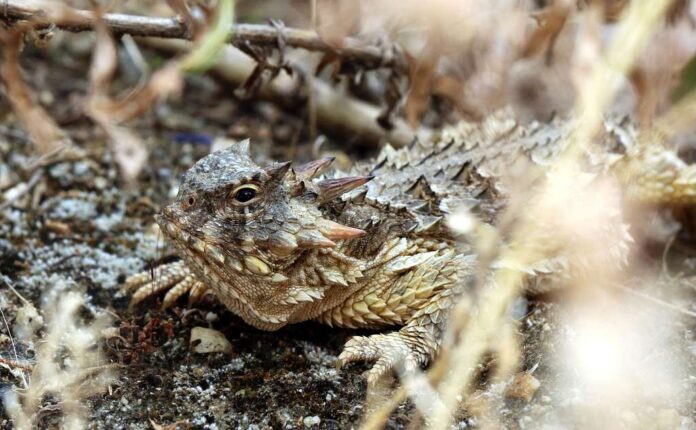Survival is one of the keys when it comes to living in the wild. That is why animals with strange defense mechanisms are very interesting to learn about. When threatened, they use their flexibility and fascinating defense mechanisms to distract the predators before escaping. It is not about biting or running away like we usually see in common animals. The animals with strange defense mechanisms use absolutely unique strategies to stay alive. We will bring 12 of them to show you today so let’s find out and see which one you think is the strangest.
1Bombardier Beetle
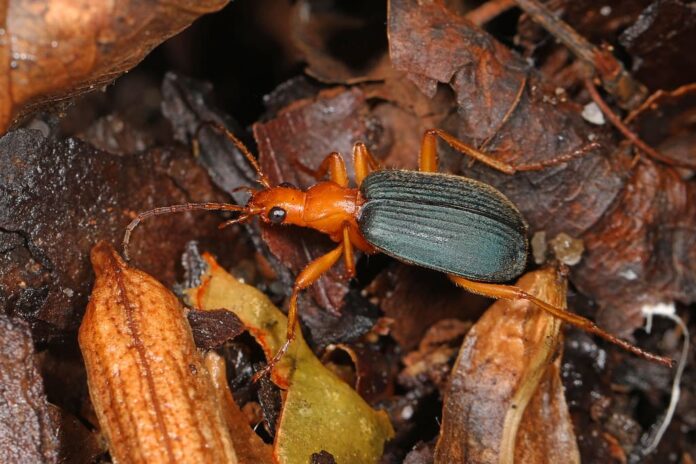
Defense Mechanism: Spray Toxic Fluids
This innocent-looking little insect cannot fly away instantly when attacked which is why they have another defense mechanism. In case of emergency, the beetles produce an internal chemical explosion in their abdomen. Then they expel a jet of boiling and irritating liquid toward their attackers. The cool part is they can launch their chemical bombs up to twenty times before running out of ammunition. While the predators are wallowing in the hot anal fluids, our insects spread their wings from under the cover and fly away.
2Boxer Crab
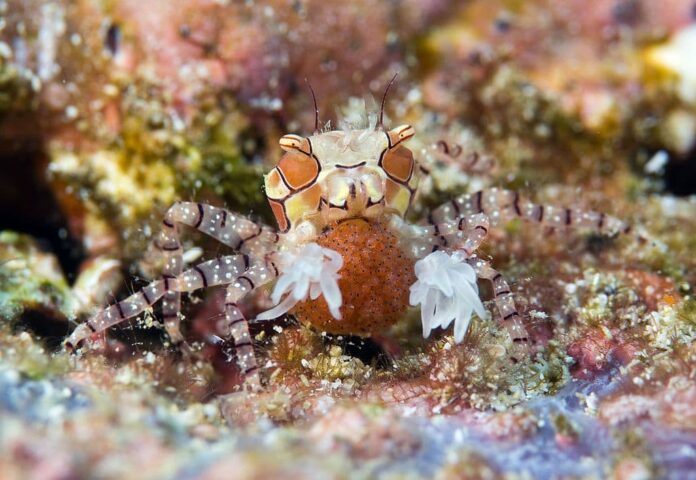
Defense Mechanism: Poisonous Pom Pom
Known as the cheerleader of the ocean, this cute little thing here has a very interesting way of defending itself. Simple and easy, the crabs swing the poisonous anemones around as a defense mechanism. When feeling threatened, the crab will utilize the sea anemones forward in punching movement toward the enemies. The sea anemones’ tentacles sting really bad, and that is how they chase their aggressor away.
The thing is that those anemones are like the business partners of the boxer crabs. The crabs have small claws which are too small to defend themselves but big enough to hold the anemones. Pom pom crabs use poisonous anemones to catch food, the crabs get food particles from the tentacles of the anemones. The food remaining is enough for the anemones, and this partnership goes on and on for as long as they live.
3Cyanide Excreting Millipede
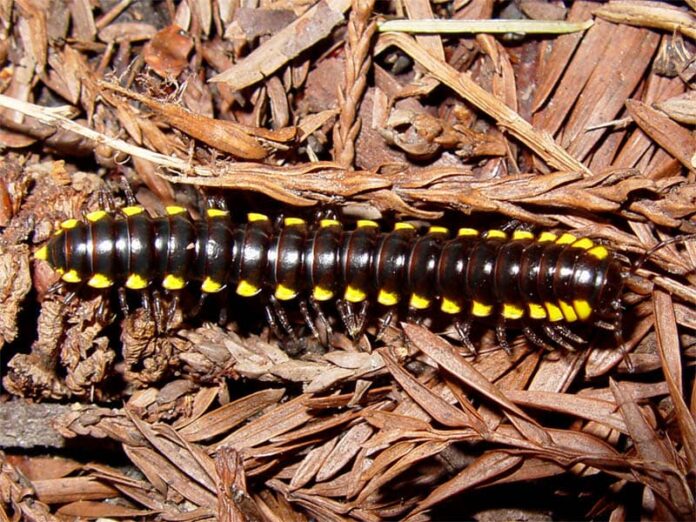
Defense Mechanism: Cyanide
Was born with toxic cyanide and foul-tasting chemicals, this species of millipede is not one delicious meal to eat. The cool part is that these leggies glow in the dark, and that is also part of their defense mechanisms as well. They glow by using their radiance to warm nighttime predators to stay away, according to scientists. When disturbed by touching or picking up (from humans), they ooze toxic cyanide and foul-tasting chemicals from small pores.
Of course, the amount of cyanide that they exude is not enough to seriously harm a human. However, it may stain the skin or burn and blister if your skin is sensitive. For predators like birds and rodents; in contrast, the cyanide they secreted is very lethal to them. Just perfect to protect themselves from the predators who try to eat these poor blind millipedes.
4Malaysian Exploding Ant
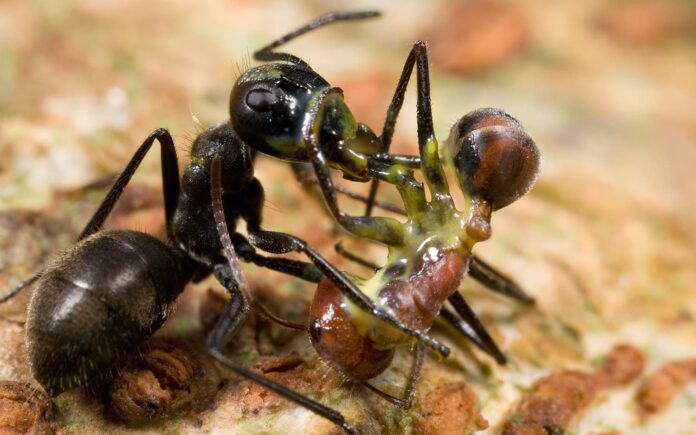
Defense Mechanism: Suicide Bombers
Most ants sting when they want to defend themselves, this one doesn’t. The way that they defend themselves is way more surprising and effective, they explode themselves. Despite the fact that their size is just as tiny as ordinary ants, their bodies have large glands full of poison. When threatened, they contract their ab muscles to build up the poison before exploding it through their heads.
When that happens, the explosion simply sprays the toxins on the threat which causes them to die. Also, these extreme soldiers do so in order to serve and protect the rest of the colony. In case the enemies are large and survive the poison, they will totally think twice before approaching the area again. After exploding, the ants, of course, die giving their life and limbs for the sake of their loving colony.
5Hairy Frog
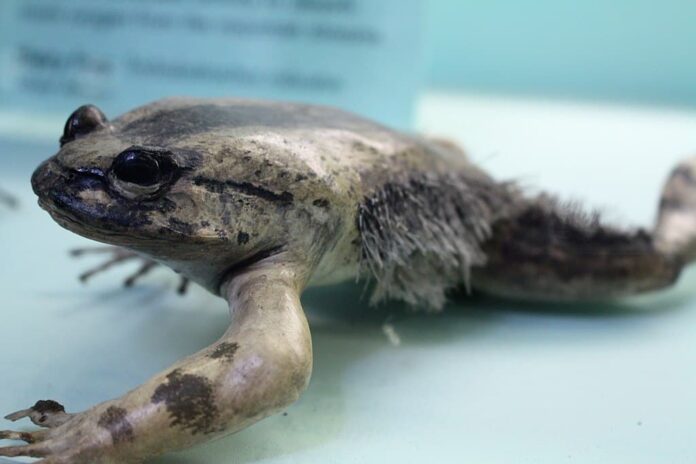
Defense Mechanism: Hidden Claw Wolverine Style
Despite the scary look, this frog also roams the earth with the extra gruesome skill to defend itself. When threatened, our frogs here break down their bones internally to come out with a wicked set of cat-like claws. It is not that the bones pierce their skin when they do so, the bones grow through the skin. Surprisingly enough, their claws are sharp enough to hurt us humans as well not just the frog’s predators.
As a matter of fact, people are also one of their predators, especially in Cameroon. Hunters use long spears and machetes to kill the frogs so that they avoid the claws. In case you wonder how they got their name, the hair explains it all. When they breed, the males produce long strands of skin and arteries that resemble hair. Scientists think that the hair might bring more oxygen through the skin, but it is still uncertain though.
6Iberian Newt
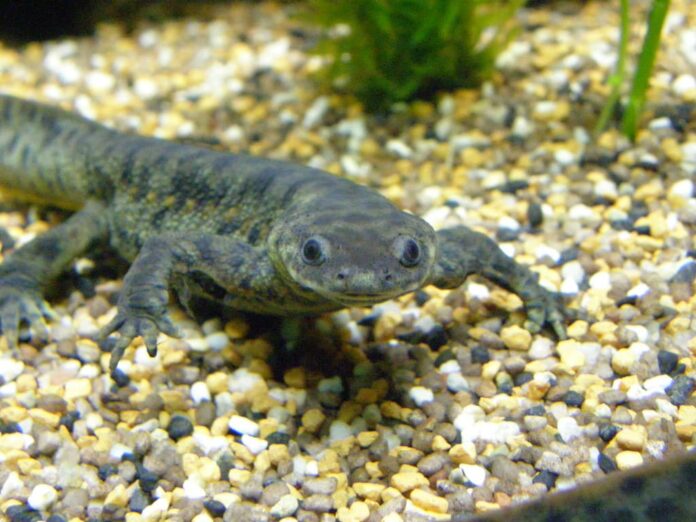
Defense Mechanism: Piercy Ribs Wolverine Style
Here we have another animal with strangest defense mechanisms that are not different from the previous one. When threatened, the newt actively forces its ribs out through its back. When doing so, it swings its ribs forward by increasing their angle to the spine by up to 50 degrees. As the process progresses, the newt keeps the rest of its body still. Such movement increases the body size of the newt while the ribs stretch and pierce through the skin. Then the ribs stick outside its body like exposed spines, and don’t worry because doing so does no harm to them.
More than that, the new secretes a poisonous milky substance onto the body’s surface. The combination of the poisonous secretion and the ribs as stinging tools is highly effective. The impact will be very striking if the predators try to bite the newt or pick it up using its mouth. That is when the poison is almost injected into the skin within the mouth which leads to causing severe pain or death.
7Neocapritermes Taracua Termite
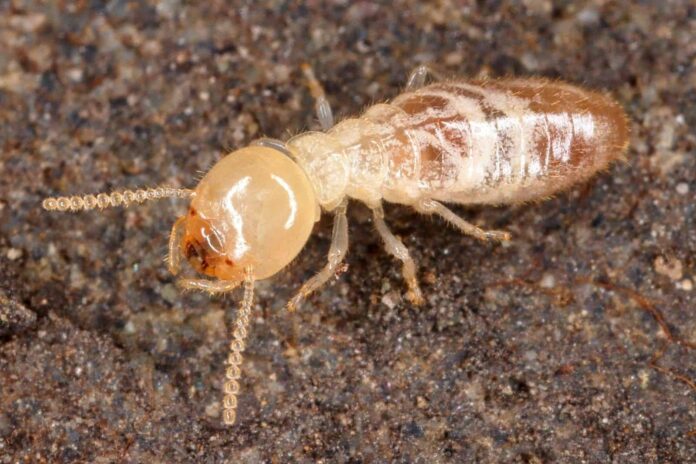
Defense Mechanism: Self Explosion
You know the love for the colony is big when you explode yourself to kill or scare the enemies away. As some of the worker termites grow old, they also start to grow sacks of toxic blue liquid as well. The older the workers get, the larger and the most toxic those backpacks become. When exploded, the toxic blue liquid oozes sticky or smelly fluid onto their opponents. That is because older worker termites are capable of working as much, so their job is to protect the colony instead.
8Potato Beetle
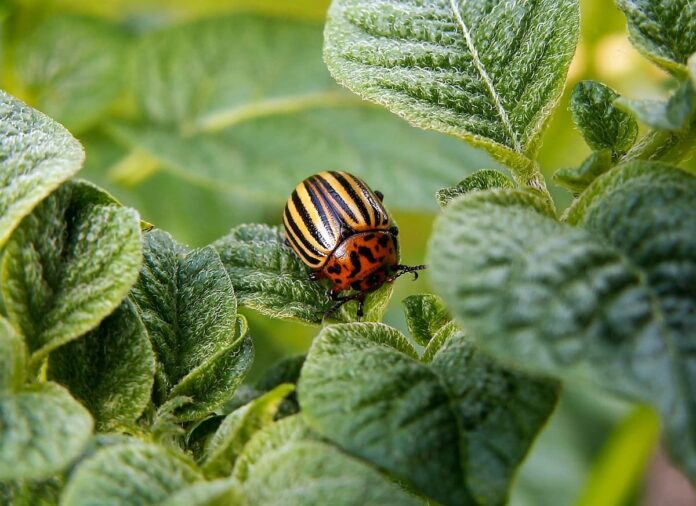
Defense Mechanism: Stinky Backpack
Disgusting indeed, but a bug would do anything to survive. Potato Beetles use their own feces as an intriguing strategy to deter predators from eating them. The thing is that these little insects feed on a poisonous plant known as Nightshade. Nightshade is toxic to most of their predators, so no doubt why potato beetles cover themselves in their own toxin-containing feces. That is why the beetles are not only smelly but also effective, and the appearance is not that pleasant as well.
9Pygmy Sperm Whale
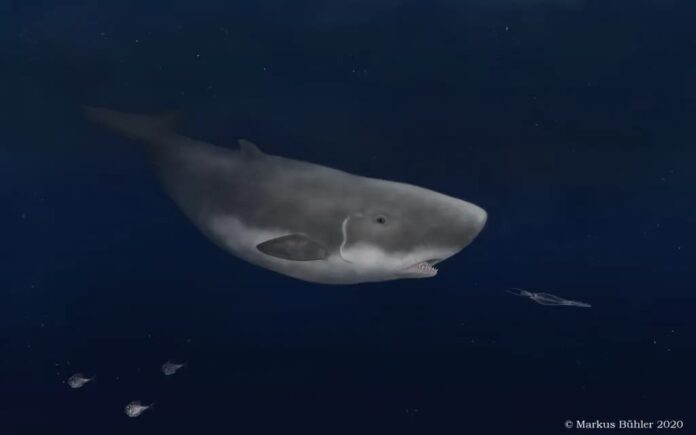
Defense Mechanism: Emergency Defecation
With their large size, sperm whales still have their enemies no matter what which is why they also need to defend themselves. For starters, sperm whales are the largest toothed predators in the world yet people are one of their hunters. In order to protect themselves, pygmy sperm whales use the one method that not everyone would like to experience. Simply, they release a cloud of reddish-brown intestinal fluid and then dive which is somehow similar to squid ink.
10Sea Cucumber
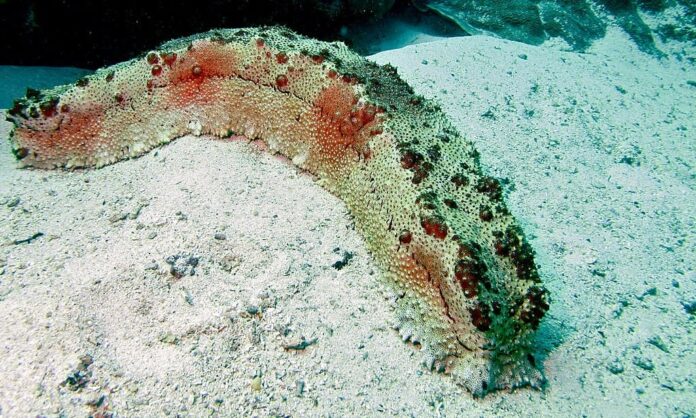
Defense Mechanism: Body Transformation
It is not that sea cucumbers can transform themselves into another different-looking animal, just to clarify. The thing is they can turn their bodies into mush to climb through small cracks so that they can solidify into small lumps. That’s not all, the stunning part is that can literally scatter themselves into pieces to fool predators. The worst thing is they can also eject their intestines out of their anus so that their digestive tract’s toxic juices will poison the enemies. And yes, those intestines will quickly regenerate.
11Slow Loris
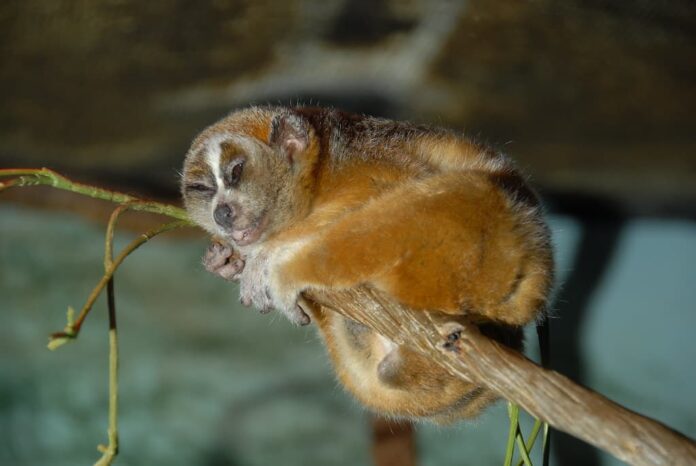
Defense Mechanism: Toxic Bites
Here you are looking at the only poisonous primate in the world that has the ability to kill. So slow lorises store a poisonous toxin on the inside of their elbows which they can lick to become poisonous. When feeling threatened, the loris assumes a defensive posture as its mouth has quick access to the brachial gland. That is when it applies the poison to the top of its head for protection. Some other times the loris keeps the poison in its mouth to create a toxic bite for the predators.
Cute and all, but these primates have super sharp teeth that dig into skin to cause excruciating pain or possibly death. As for humans, the toxic bites of a loris can put a person into a fatal anaphylactic shock. Apart from defending themselves, the lorises also use the same strategy as a territorial defense against the same species. Or in other cases, they use their poison to protect their young.
12Texas Horned Lizard
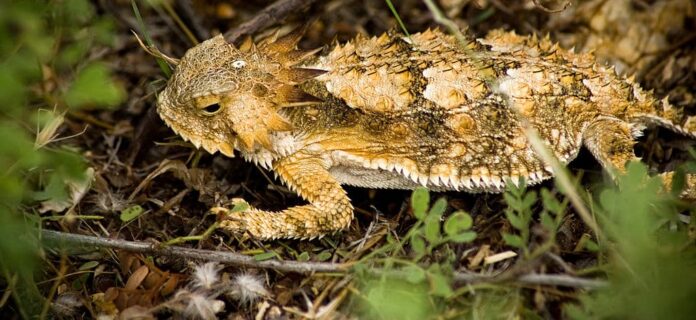
Defense Mechanism: Blood Shooting
By the look, you might have thought that this lizard uses the spikes on its body to defend itself. Nope. When threatened, our spiky friends here squirt blood from their eyelids at the predators right into their mouths. Like who wouldn’t get frightened and flee when that happens from the animals they expect to eat? Also, it is a normal thing for these lizards to do so since they need to remove foreign particles from their eyes anyway.
That is not all, Texas Horned Lizards are pretty good at staying alive before they have a few more defense mechanisms. Apart from shooting blood from their eyes, the first stage of defending is camouflage. With their color pattern, these lizards can blend into the background perfectly. Not to mention they can change their color tone from light to dark and back again, surviving is not that difficult.
Another way to defend themselves is to appear inedible to some predators. Texas Horned Lizards can puff themselves with air to appear too big to eat. Then it confronts its predators with its array of horns by manipulating it to point forwards or backward, how cool is that? Snakes are one of the predators, and no snakes can swallow these lizards with such a defending skill. These lizards are also fast, so they will simply run away sometimes.
Related Post: Animals With Strong Armors

